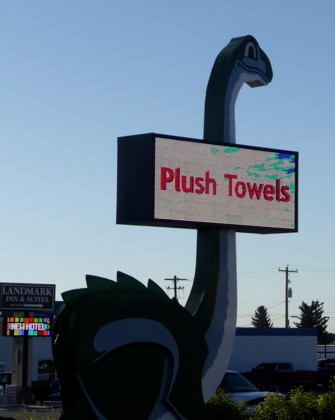
Dinosaur Inn. Vernal, Utah
The day after the disaster an editor called from the Times and asked me to write a short essay, one of many that would appear in that Sunday’s Week in Review. The result, Orders of Magnitude, was about horror too deep to fathom. Ken Kesey captured the feeling in an email he sent to friends: “Everything was so clear that day, so unencumbered by theories and opinions, by thought, even. It just was.”
The mental gridwork had been shattered, and in the aftermath there were reasons for hope. Commentators talked about the end of irony, the end of ideology, the end of the superficiality and posturing that had led us into the political swamp. It seemed possible that the world could be different.
And then a few weeks later things were already settling back to the same depressing routine. Democrats and Republicans were fighting over the privatization of airport security. Violence had returned to TV. On the two-month anniversary I tried to restrain my disappointment when I wrote another piece for the Review, Double Bind:
Not knowing what to do with ourselves, we react to the unprecedented with the same old scripts -- fly flags from car antennas, wear ribbons on our lapels --while wondering whether we should be aspiring higher, whether normal is really good enough anymore. We look everywhere for reassurance that the old life is returning. But simultaneously comes the vague yearning for some kind of fundamental change . . .
Last weekend, over the Labor Day holiday, I drove through northwestern Colorado to look at outcrops of a geological layer called the Morrsion Formation — striped, colorful bands of sandstone and mudstone that are a rich source of dinosaur bones. On a long, lonely stretch between the barely existent towns of Fruita and Rangely I entered an electromagnetic black hole: As the radio hissed with static I kept hitting the “seek” button, locking momentarily onto either NPR or Fox. Back and forth, back and forth. Two different Americas, two different realities, separate and immiscible.
George Johnson
The Santa Fe Review
